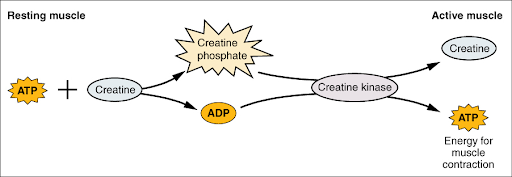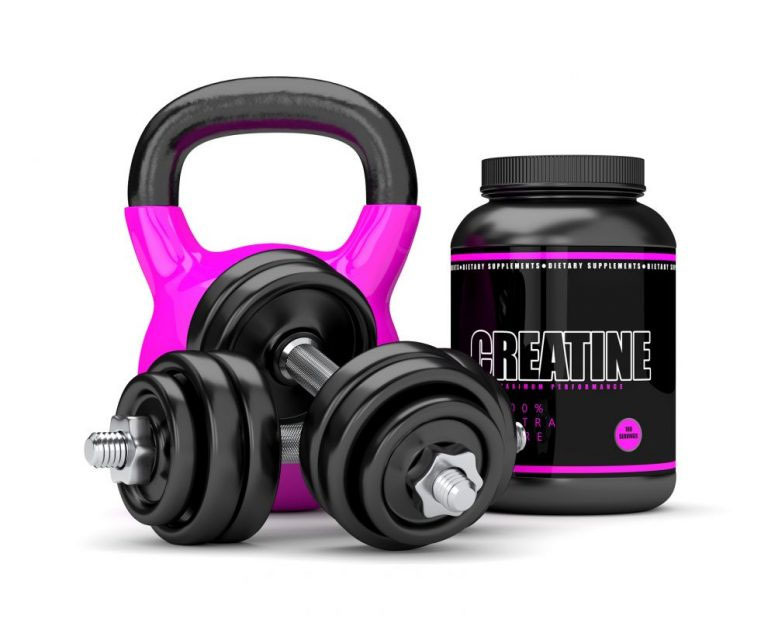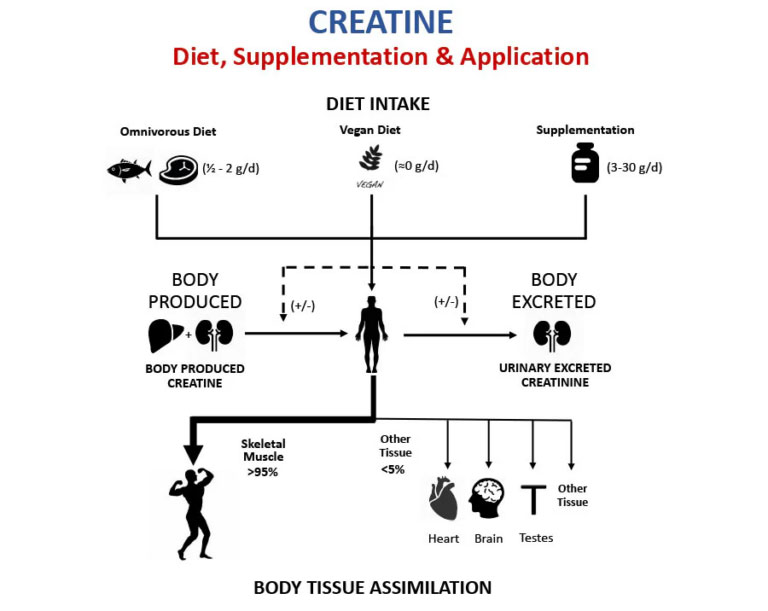Understanding Creatine and Sports Performance in Athletes
Many of our training programs at Elite’s Sports Performance & PT are designed for middle- and high school -aged athletes. Like most aspects of their lives, our younger athletes are very interested in fitness trends they hear about from friends or family members, but mostly from social media. One of the most commonly asked questions for our coaching staff is, “should I be taking creatine?” Our coaches typically follow up with the question, “Well, what is creatine and why do you think you need to take it?” Most athletes look back at us with a puzzled look and say something along the lines of, “oh, my teammate does and I want to try it” or “I saw it on Tik Tok and they said it would make me stronger.” The issue is that most of our athletes do not know what creatine is, how it is created, and what its purpose is. So we hope to answer some of these common questions in our blog post!
Creatine – What Is It?
Creatine is a compound, creatine phosphate, that is naturally made in the human body, more specifically can be found in the liver with trace amounts also in the kidney and pancreas. The purpose of creatine is to provide energy to the cells of the body. Creatine phosphate (CP) is found in the skeletal muscle and is used to transform adenosine diphosphate (ADP) into adenosine triphosphate (ATP). ATP is then used as energy by the muscle. CP is critical for short burst exercises such as lifting weights and sprinting as it helps to quickly replenish ATP in the muscle (Patel, 2019).
Creatine is a compound, creatine phosphate, that is naturally made in the human body, more specifically can be found in the liver with trace amounts also in the kidney and pancreas. The purpose of creatine is to provide energy to the cells of the body. Creatine phosphate (CP) is found in the skeletal muscle and is used to transform adenosine diphosphate (ADP) into adenosine triphosphate (ATP). ATP is then used as energy by the muscle. CP is critical for short burst exercises such as lifting weights and sprinting as it helps to quickly replenish ATP in the muscle (Patel, 2019).

Creatine can also be consumed by eating a well balanced diet. It can be found in red meat, seafood, pork, and poultry (Patel, 2019). For younger athletes, this is the preferred method of consuming creatine as it also provides many other nutrients found in these foods.
Supplementation
By high school, and especially college, student-athletes have likely heard about supplements and how some are beneficial for improving performance. Creatine is high on this list for any student-athletes; in fact, “reports suggest that 37.2% of collegiate athletes use, or have used, creatine during their preparation for competition” (Haff & Triplett, 2016). As for high school student-athletes, of the athletes who are consuming supplements, 90% of those are consuming creatine daily (Haff & Triplett, 2016). The goal of the creatine supplement is to increase the levels of creatine in the muscle to allow for larger strength gains. Creatine can be absorbed in the body by eating proper nutrition, however with supplementation, creatine levels rise ~20% (Haff & Triplett, 2016). With all of that said, there is a “cap” within the body that limits the amount of creatine to 150-160 mmol/kg in the body at any given time (Haff & Triplett, 2016). This fact contradicts what some athletes may believe, which is that more is always better.
Benefits of Creatine
Creatine has been found in many studies to improve performance in strength exercises as well as improve performance throughout a training session. This results in less fatigue and faster recovery between sets and from training session to training session. (Haff & Triplett, 2016). These improvements are seen almost immediately and over a longer term as well. In addition, improvements in power also occur. However, by no means does taking creatine as a supplement replace strength training; it should be used in addition to a properly designed strength and conditioning program. Creatine is also known to improve body composition and muscle fiber size (Patel, 2019).

Is Creatine Safe?
Overall, creatine has been found to be safe and effective for athletes when taken with the appropriate dosage (Patel, 2019). With that being said, as with any supplement, please consult with your doctor before starting creatine to determine if it is safe for you to do so. It is also recommended that athletes only consume creatine supplements that have been tested and deemed safe by (National Sanitation Foundation- NSF Certified for Sport, Informed Choice, or Banned Substances Controlled Group- BSCG) (Patel, 2019).
Now that we know what creatine is, how often should you take it?
There are two set ups for taking creatine to benefit the athlete. The first requires a loading dose of 20-25g for 5 consecutive days, followed by 2g/day to maintain (Haff & Triplett, 2016). The loading dose increases the creatine levels quickly in the body and allows the athlete to reap the benefits of the supplement sooner. The second option is to take the 2g/day maintenance dose from the start. This would take roughly 30 days to reach the same level as would be reached with the loading dose (Haff & Triplett, 2016).
Is Creatine Safe for Youth Athletes?
While it is recommended for athletes to wait until they are 18 years old, there is no evidence supporting that creatine is unsafe for athletes under 18. With that being said, it is crucial for athletes to consult with their parents and doctor before starting a creatine supplementation program. It is also important for athletes to strictly follow the recommended dosage of creatine.
It is also important to note that a supplement is not needed to increase your intake of creatine. There are natural ways to consume creatine in a well-balanced diet.

References
Haff, G., & Triplett, N. T. (2016). Essentials of strength training and conditioning. Fourth edition. Champaign, IL, Human Kinetics.
Patel, P. (2019). Creatine supplementation for athletes. NSCA Coach. 6(3). https://www.nsca.com/education/articles/nsca-coach/creatine-supplementation-for-athletes/
Elite 10-Week Summer Sports Performance Programs
If you or an athlete in your family are looking to improve your STRENGTH, SPEED, POWER, AGILITY and reduce your risk of injury, Elite’s 10-week Summer Sports Performance Programs are on sale now! Choose from 2x, 3x, or 4x/week personalized, sport-specific training programs to help prepare you for your upcoming season! With locations in both Foxboro and Stoughton, we offer morning and afternoon/evening sessions Monday-Saturday at both locations. We also offer sibling discounts and a small coach-to-athlete ratio to ensure optimal form and safety at all times. Monthly training packages are also available. Space is limited, so sign up today!

